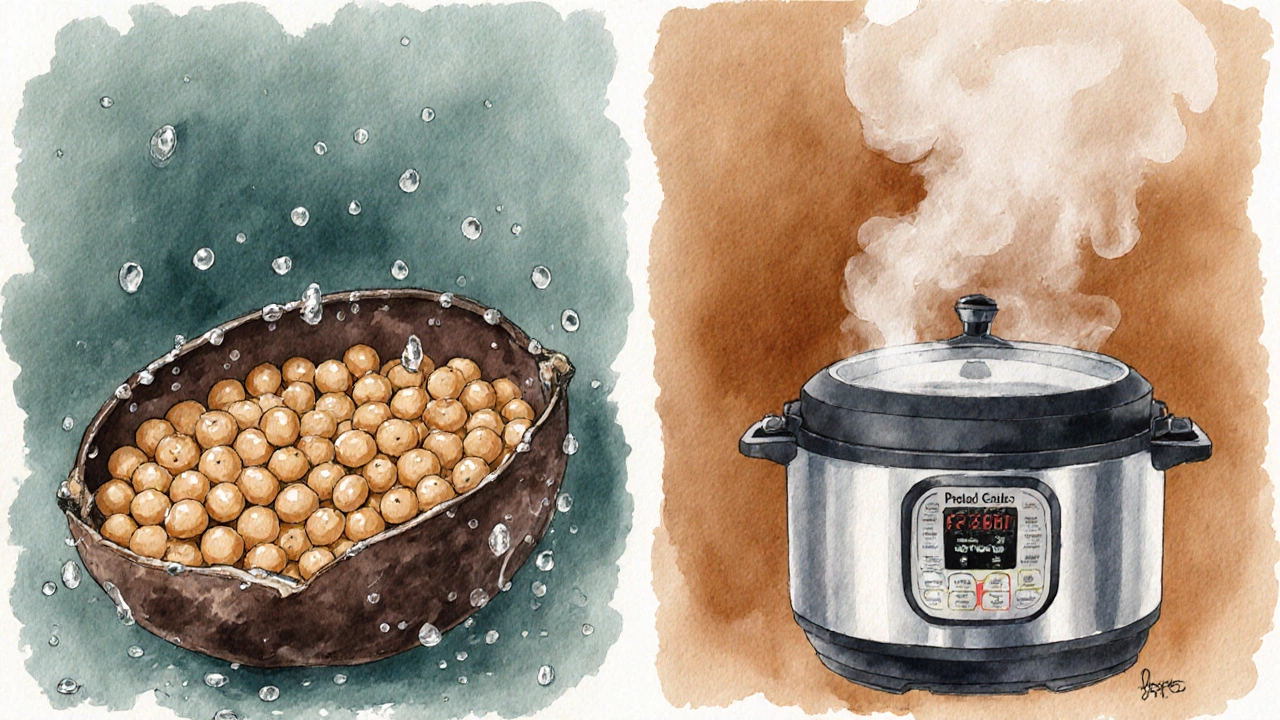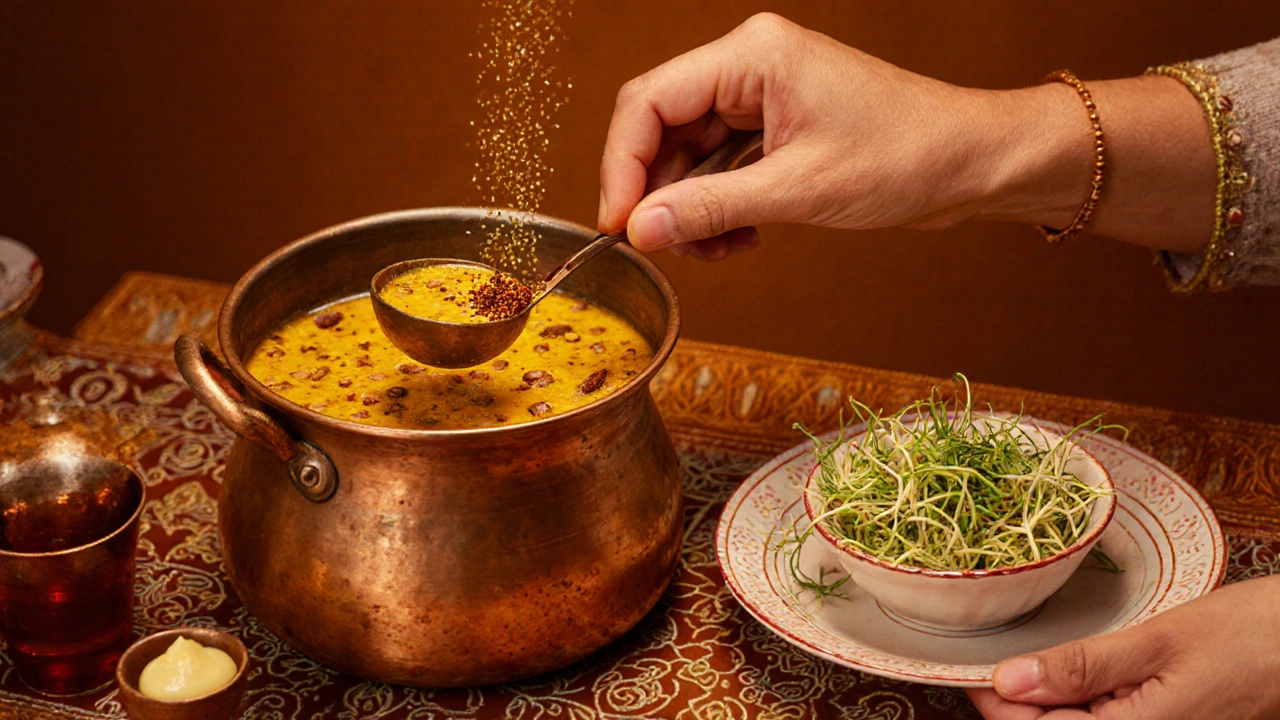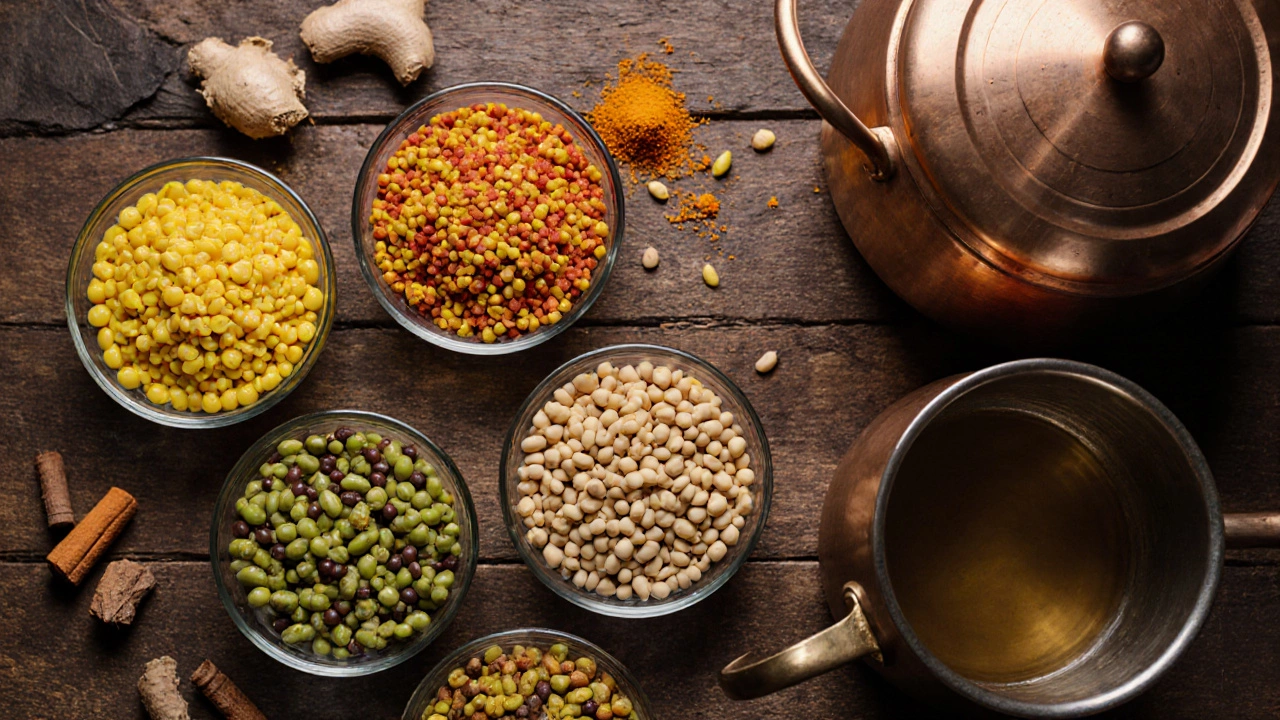Dal Digestibility Checker
Digestibility Analysis
Ever wondered heavy to digest dal and why some beans leave you feeling bloated while others pass through almost unnoticed? The answer lies in the type of dal, its fiber‑rich skin, and the amount of antinutrients it carries. This guide breaks down the most common Indian dals, rates their gut‑friendliness, and gives you practical tricks to make even the toughest beans easier on your stomach.
Why some dals feel heavier than others
Digestibility depends on three main factors: the thickness of the seed coat (which holds most of the fiber), the level of phytates and oligosaccharides that ferment in the colon, and the cooking time required to break down those structures. Dals with a thick, dark skin-like urad or chana-generally need longer soaking and simmering, while pale, split varieties such as moong and masoor have most of the hull removed, making them quicker to soften.
Key nutrients that influence digestion
- Fiber (g per 100g): higher fiber means slower gastric emptying, which can be good for satiety but may cause gas if the fiber is not fully broken down.
- Protein: legumes are protein powerhouses; however, protein bonds with fiber can create resistant starches that linger in the gut.
- Antinutrients (phytates, lectins): these bind minerals and can stir up digestive discomfort unless soaked or sprouted.
Moong Dal (yellow split mung bean)
Moong Dal is a small, yellow, split lentil that has most of its outer skin removed. With only 1.2g of fiber per 100g and a low phytate level, it cooks in 10‑15minutes and is usually the first choice for a gentle soup or khichdi.
Toor Dal (arhar or split pigeon pea)
Toor Dal is a medium‑sized, yellow‑brown split pea that retains a thin seed coat. It delivers about 6g of fiber per 100g and contains moderate phytates, so a 4‑hour soak followed by 25‑30minutes of simmering is recommended for easy digestion.
Masoor Dal (red lentil)
Masoor Dal is a red, split lentil that is partially hulled. Its fiber content sits at 4g per 100g, and it cooks in about 12‑15minutes. Because the hull is thin, it’s less likely to trigger gas compared with whole‑seed dals.
Urad Dal (black gram)
Urad Dal is a large, black‑skinned legume that is usually split and hulled for cooking. It packs 7g of fiber per 100g and a high phytate level, making it one of the heavier options. Soaking for 8‑12hours and cooking for 40‑45minutes helps reduce its gas‑forming potential.

Chana Dal (split Bengal gram)
Chana Dal is a golden‑brown split chickpea with a fairly thick seed coat. With 9g of fiber per 100g, it’s the most fibrous among the common dals discussed here. It needs an overnight soak and at least 30‑35minutes of pressure‑cooking to become tender.
Lobia (black‑eyed peas)
Lobia is a small, cream‑colored bean with a thin skin but a dense interior. Fiber levels are around 6g per 100g, and the beans contain oligosaccharides that can ferment quickly, leading to bloating if not pre‑soaked.
Whole Green Gram (whole moong beans)
Whole Green Gram is a unprocessed mung bean that retains its outer green hull. The hull adds about 5g of fiber per 100g, turning an otherwise easy dal into a moderate‑digestibility legume. Sprouting or grinding into a fine paste cuts down the heaviness.
Split Lentils (generic)
When a recipe simply calls for “split lentils,” it usually refers to a blend of masoor, toor, or moong that have been hulled. The overall fiber average is roughly 3‑4g per 100g, positioning them in the easier‑to‑digest tier.
Digestibility comparison of common dals
| Daal | Fiber (g/100g) | Phytate level* (mg) | Typical cooking time (min) | Digestibility rating |
|---|---|---|---|---|
| Moong Dal | 1.2 | 80 | 10‑15 | Easy |
| Masoor Dal | 4.0 | 120 | 12‑15 | Easy‑moderate |
| Toor Dal | 6.0 | 150 | 25‑30 | Moderate |
| Lobia | 6.0 | 130 | 20‑25 | Moderate |
| Urad Dal | 7.0 | 200 | 40‑45 | Heavy |
| Chana Dal | 9.0 | 210 | 30‑35 | Heavy |
| Whole Green Gram | 5.0 | 180 | 25‑30 | Moderate‑heavy |
*Phytate level is a rough estimate based on USDA nutrient data; higher values generally mean more antinutrients that can slow digestion.
Soak, rinse, and discard the water
Soaking any dal for at least 4hours (overnight for the larger beans) activates enzymes that break down oligosaccharides. Always rinse the beans and discard the soak water to remove released phytates.
Use pressure cooking
Pressure cookers reduce cooking time dramatically and achieve a softer texture, which means your gut doesn’t have to work as hard to break the fiber down. For heavy dals like urad or chana, a 15‑minute pressure cook after soaking is ideal.

Add digestion‑aiding spices
Common Indian aromatics such as cumin, asafoetida (hing), ginger, and turmeric not only boost flavor but also stimulate digestive enzymes. A pinch of hing in the tempering can cut gas production by up to 30% according to a 2022 nutrition study.
Try sprouting
Sprouting reduces the seed coat thickness and cuts phytate levels in half. Simply rinse soaked beans every 8hours for 2‑3 days until tiny sprouts appear, then use them raw in salads or lightly sauté them.
Blend into a puree
Turning a heavy dal into a smooth puree (as done in dal makhani) distributes the fiber evenly and makes it easier for the stomach to process. Adding a splash of ghee or a teaspoon of oil also lubricates the digestive tract.
IBS, sensitive stomachs, and low‑FODMAP diets
If you have irritable bowel syndrome or follow a low‑FODMAP plan, stick to dal types rated “Easy” (moong, split masoor) and keep portions under ½cup cooked. Heavy dals should be reserved for occasional meals and always prepared with the tricks above.
Post‑workout recovery
Athletes looking for protein often reach for urad or chana dal. To keep the gut happy, combine them with a probiotic yogurt sauce or ferment the dal into a tempeh‑like patty-both processes pre‑digest the proteins.
Quick cheat‑sheet
- Easy: Moong Dal, Split Masoor - 10‑15min, low fiber.
- Moderate: Toor Dal, Lobia, Whole Green Gram - soak 4‑8h, 20‑30min.
- Heavy: Urad Dal, Chana Dal - soak overnight, pressure‑cook 15min.
- Always add cumin, hing, ginger for smoother digestion.
- Rinse, discard soak water, and consider sprouting for any dal.
Frequently Asked Questions
Can I eat urad dal every day?
Occasional consumption is fine, but because urad dal is high in fiber and phytates, daily intake may cause bloating for sensitive stomachs. Pair it with probiotic foods and soak thoroughly to lessen the load.
Is sprouted moong easier to digest than split moong?
Yes. Sprouting removes most of the hull and reduces antinutrients, making the bean gentler on the gut while boosting vitamin C and B‑complex content.
What spice best reduces gas from dal?
Asafoetida (hing) is the most effective; a pinch added during tempering can cut gas formation significantly.
How long should I soak chana dal?
Aim for 8‑12hours, or overnight. This softens the thick seed coat and lowers the phytate count, shortening cooking time to about 30minutes under pressure.
Can I use a slow cooker for heavy dals?
Yes, but start with a pre‑soak. A slow cooker on low for 6‑8hours will break down the fibers, though the texture may be softer than a pressure‑cooked dal.
